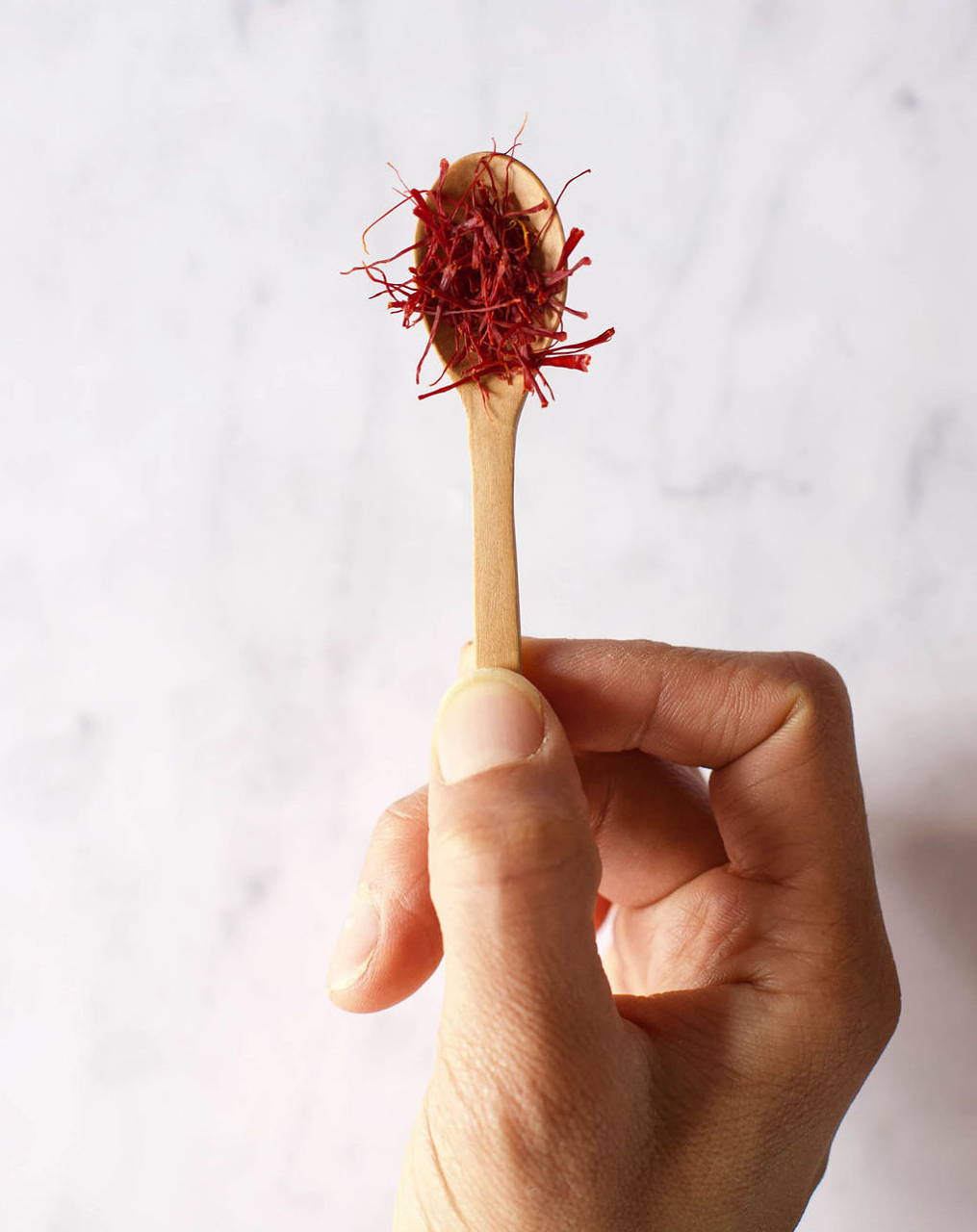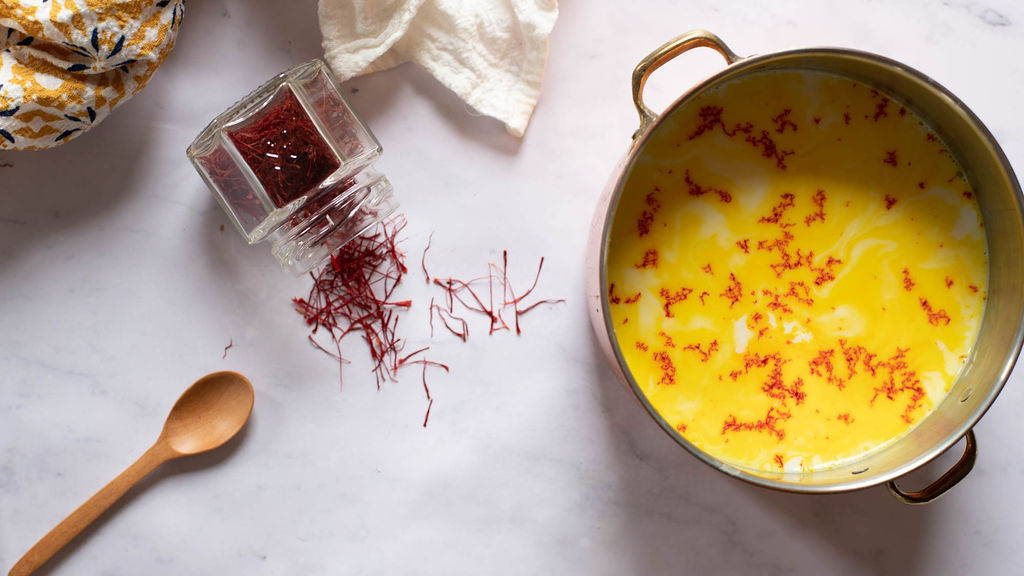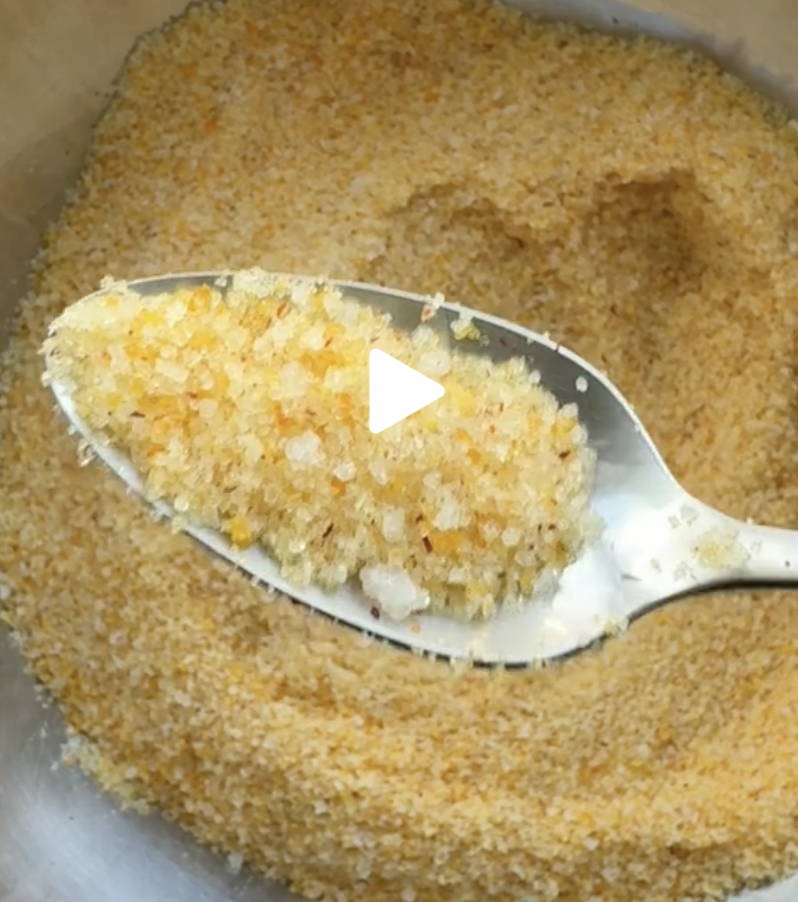Let's Make Saffron Infused Sea Salt!
Saffron has a unique taste that can be described as floral, slightly sweet, and earthy with a subtle bitterness. It also has a distinct aroma that is often described as honey-like or hay-like. The flavor and aroma of saffron are quite intense and a little goes a long way. Saffron is a highly prized spice that has been used in cooking for centuries, and it adds a unique and luxurious flavor to a wide range of dishes, from savory rice dishes to sweet desserts.
Saffron salt is easy to make!
INGREDIENTS:
- 0.5 grams saffron
- 1/2 cup moist sea salt
DIRECTIONS:
Step 1: Using a mortar and pestle, grind a 1/2 gram of saffron with a pinch of salt into a fine powder.
Step 2: Mix with 1/2 cup of moist sea salt, such as fleur de sel. The moisture in the salt will help the saffron flavor to infuse as well as the turn the salt a vibrant golden hue!
Step 3: Store in an airtight jar.
Note: Sea salts should be used as a finishing salt, as their unique texture and crunch will be dissolved when used in cooking.
9 Ways to Use Saffron Infused Salt
Seafood Delight: Sprinkle saffron salt over grilled or roasted seafood such as shrimp, scallops, or fish. The delicate flavor of fleur de sel enhances the natural taste of the seafood, while the saffron adds a subtle floral note.
Creamy Risotto: Finish a classic risotto dish with a pinch of saffron salt. The salt crystals will add a delightful crunch to the creamy rice, and the saffron will complement the richness of the dish.
Citrusy Salads: Use saffron salt to elevate salads, especially those with citrus components. The combination of saffron, salt, and citrus creates a vibrant and refreshing flavor profile.
Butter-Basted Vegetables: Roast or sauté vegetables and finish them with a bit of saffron salt. This works particularly well with butter-basted vegetables like asparagus or baby carrots, enhancing the natural sweetness of the veggies.
Grilled Meats: Sprinkle saffron salt on grilled meats such as lamb chops, steak, or chicken. The salt will create a savory crust, and the saffron will add a hint of floral aroma.
Mashed Potatoes: Upgrade mashed potatoes by folding in a small amount of saffron salt at the end. The salt crystals will add texture, and the saffron will infuse a subtle, exotic flavor.
Chocolate Desserts:
Experiment with saffron salt on chocolate desserts like dark chocolate mousse or flourless chocolate cake. The unexpected combination can provide a sophisticated flavor experience.
Fruit Sorbet: Sprinkle saffron salt over a scoop of fruit sorbet for a sweet and savory contrast. This works well with flavors like mango, pineapple, or passion fruit.
Caramelized Nuts: Toss caramelized nuts (such as almonds or walnuts) with saffron salt for a delightful snack. The combination of sweet, salty, and savory will be irresistible.

Saffron has been used for its medicinal properties for thousands of years. Some attributed medicinal properties of saffron include:
Anti-inflammatory: Saffron contains compounds that have anti-inflammatory properties, which can help reduce inflammation in the body.
Antioxidant: Saffron is rich in antioxidants, which can help protect the body from damage caused by free radicals and oxidative stress.
Mood-enhancing: Saffron has been shown to have mood-enhancing properties and may help alleviate symptoms of depression and anxiety.
Digestive aid: Saffron has traditionally been used to help improve digestion and may help relieve symptoms of gastrointestinal disorders such as bloating and indigestion.
Pain relief: Saffron contains compounds that may help relieve pain and reduce the need for pain medication.

Other tips for experimenting with saffron:
Toasting. Try toasting it for a few seconds in a dry skillet to deepen the flavor and aroma.
Pairing. Pair with bold flavors such as cumin, cardamom and garlic to develop complex layers of flavor.
Use in desserts. Add to creamy desserts such as ice cream, custards and cake.
Storage. Store saffron in an airtight container. Whole saffron threads should be used in 1-2 years for optimum flavor.





